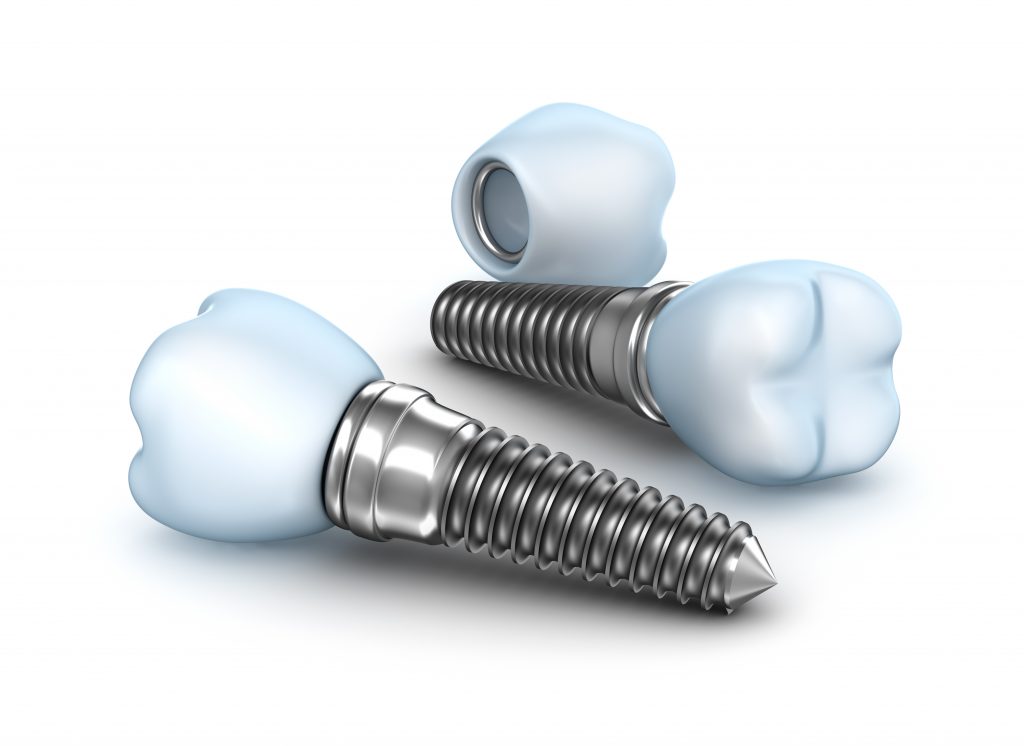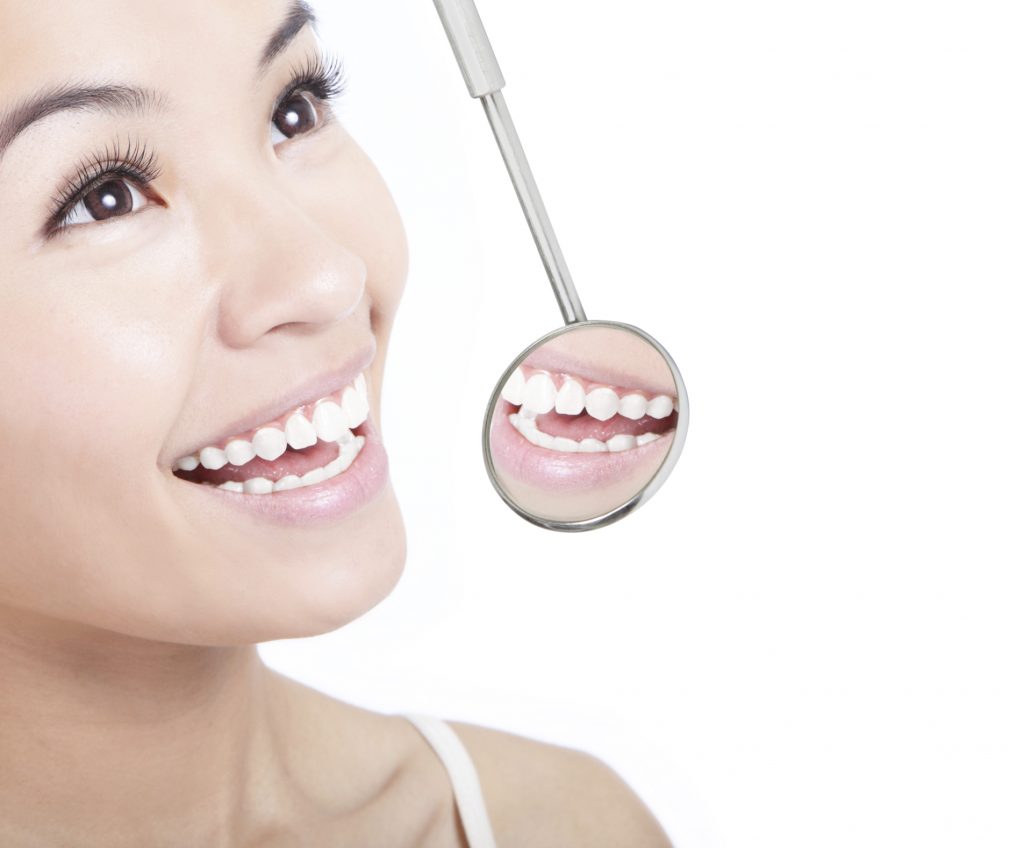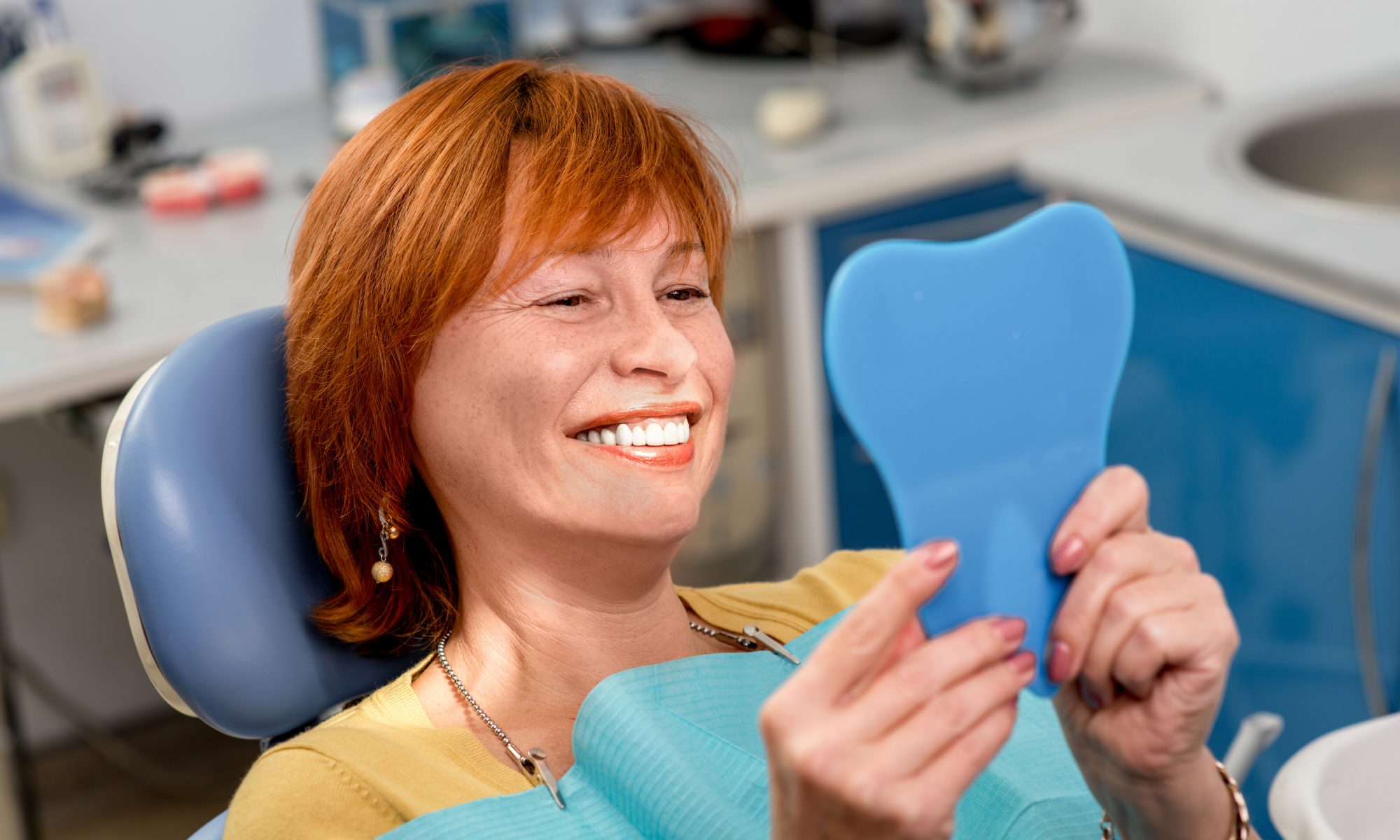A smile is often considered one of our most powerful assets, but when gum recession strikes, it can lead to dental discomfort and aesthetic concerns. Fortunately, gum tissue grafting offers a solution that not only restores oral health but also enhances the beauty of your smile.
Continue reading “An Overview of Gum Tissue Grafting | Chicago Dentist”Soft Tissue Grafting When There Are No Teeth? | Chicago Dentist
The health and appearance of your gums are just as important for your beautiful smile as your teeth. They are said to be the frame around the photo, so maintaining them is vital if you want to show off your pearly whites with pride. We employ a method that allows us to enhance the appearance of your soft gum tissue while also performing a restoration.
Here is a real-world example of an effective soft tissue graft on a patient:
A 35-year-old patient was missing two teeth in the front of her mouth with an aging bridge she found unappealing. While her goal was to simply replace the bridge, a closer examination revealed how an unsightly indentation in the gum tissue is what had compromised the appearance of her bridge. Beyond replacing the bridge, we wanted to enhance her soft gum tissue as well, as it would work to improve her overall oral aesthetic.
Through the use of a minimally invasive tunneling procedure, we placed a collagen graft to build out the tissue and create the impression that a tooth was present. We saw the improvement immediately following surgery, and in the coming weeks, her big more closely mimicked the appearance of real teeth than an artificial solution. Rather than simply reconstructing the tissue, it was important for us to create the illusion that she had never lost her teeth in the first place.
If the appearance of your gums is affecting your smile and confidence, a soft tissue graft may be the solution you have been looking for. A soft tissue graft is minimally invasive, will improve the look of your gums, and allow you to embrace your gorgeous smile.
If you would like more information about soft tissue grafting, call Dr. Cabrera in Chicago, IL at 312-994-7939 or visit www.perioimplantchicago.com.
Dr. Cabrera proudly serves Chicago and all surrounding areas.
Getting a New Smile in a Single Day | Chicago Dentist

As we embark on a brand-new year, many of us sit down and reflect on things they’d like to improve upon. For some, it’s fitness. For others, it’s a lifestyle improvement. If you have a flawed smile, you may want to consider cosmetic dentistry. Believe it or not, you can get your grin fixed in a single day. Don’t believe it? May we introduce you to All-on-4 implants in a day. Although this form of treatment has received a significant amount of media attention in the past couple of years, this is a service we have been providing to our patients for some time.
Not sure you are eligible? There are generally two areas where this treatment is an option:
In certain patients with a front tooth that needs to be extracted and there is sufficient bone, the periodontist will remove the tooth and place a temporary implant on the same day. For individuals who are losing all of their teeth, we do a procedure called all on 4 (AO4). Not only is your replacement created in-office, but in six months later, you have the permanent appliance.
Once the periodontist places the implants (4-6 depending on the patient), there are precautions that the patient must take during the initial period to avoid biting on anything hard.
One thing that is not mentioned in the advertising is that in all instances, the immediate teeth are temporary and further work will be required 6 months later to ensure everything is working properly. In addition, the appliances must be kept clean to prevent the tissues from getting infected. The follow up cleaning appointments are typically alternated between the periodontist and the patient’s general dentist.
If you would like more information about all-on-4 implants, call Dr. Cabrera in Chicago, IL at 312-994-7939 or visit www.perioimplantchicago.com.
Dr. Peter O. Cabrera proudly serves Chicago and all surrounding areas.
Soft Tissue Grafting: A Case Study | Chicago Dentist

Although most people concentrate on the teeth for an attractive, healthy smile, the appearance of the gums cannot be ignored. Because your gums are the “frame of your smile”, an ugly frame will destroy the appearance of a beautiful smile. Knowing this, we will often use soft tissue to enhance the appearance of the tissue in conjunction with new restorations. The following case demonstrates one such example:
This case illustrates a 35-year-old physician who was missing two teeth in the front and had a bridge placed many years ago. She did not like the appearance of the bridge and wanted to replace it. The before photos illustrate how an unsightly indentation in the gum tissue compromised the appearance of the bridge. In addition to replacing the bridge, we wanted to improve the appearance of the tissue in order to improve her “picture frame”. Utilizing minimally invasive tunneling procedures, a collagen graft was placed to build out the tissue and create an appearance that a tooth was present, but in actuality, it is missing. The improvement was seen immediately at the time of surgery, and after several weeks in a new temporary bridge, the result is even more apparent. As you can see, we have created the illusion that there are teeth present by simply reconstructing the tissue.
If you find that you have gums that are affecting your smile and self-confidence, soft tissue grafting may just be the solution you’ve been looking for. Not only will it improve the look of your gums but will also give you a discreet way to bring back a reason to smile.
If you would like more information about dental bridges, call Dr. Cabrera in Chicago, IL at 312-994-7939 or visit www.perioimplantchicago.com.
Dr. Peter O. Cabrera proudly serves Chicago and all surrounding areas.
Recession and Permanent Orthodontic Retainers | Chicago Dentist

An important component of orthodontic therapy is retaining the teeth in their final position to prevent relapse. This retention is either in the form of a removable retainer or a fixed, permanent retainer. The latter is typically used on the inside part of the lower front teeth by bonding a wire to the six front teeth. However, not all wires are passive. In some cases, the wire retains tension and will force the teeth out of the bone over time.
We have seen an increased number of cases over the past few years.
The first case (fig 4) shows the recession and the wire along the tongue side. The second case (5-8) shows severe localized recession due to the torqueing motion of the wire.
This patient reported that she had a failed graft done several months before. In reality, the position of the tooth made it virtually impossible for any graft to succeed. This highlights that the most Important part of any treatment is an accurate diagnosis. The third case reflects the same problem.
If you see recession, it is time to visit a periodontist. As part of the comprehensive exam, Dr. Cabrera will check all factors that may be contributing to the recession. If a fixed retainer is contributing to the problem, Dr. Cabrera will inform you and make the appropriate recommendation.
If you would like more information about retainers, call Dr. Cabrera in Chicago, IL at 312-994-7939 or visit www.perioimplantchicago.com.
Dr. Peter O. Cabrera proudly serves Chicago and all surrounding areas.
The Aftercare of Dental Implants | Chicago Dentist

Getting dental implants can be a nervous time for a patient, but with implants-in-a-day, a patient can have their flawed smile fixed in a single dental visit. Not only is it quick, but the results look natural and feel comfortable.
But once you leave the dental chair, what should you expect? After all, getting a new smile in a single visit must hurt. Quite the contrary – because dental anxiety is a real condition, the patient’s comfort comes into the design of these procedures. However, there is a healing process that will take about 3-6 months, or until the implant fuses to the bone (integration). So, how do you cope during this healing time? Here are some tips:
Physical symptoms. Prepare for some bleeding and swelling for the next 24-48 hours. Gauze will help with the bleeding; bite down on a gauze pad for about thirty minutes. If swelling occurs, ice packs will help to reduce it. Keep something cold on the affected area until the swelling goes down. Warm saltwater rinses are also great to reducing swelling. If you experience any pain, taking Tylenol or Ibuprofen will help the transition as the anesthetic wears off.
Diet. This one will be tricky for a while. The first day, limit your food to liquids and soft textures. As it becomes easier to eat, you can slowly move to your regular diet. Make sure to drink plenty of fluids to stay hydrated.
Moving around. You may think you won’t need downtime, but that’s not true. Oral surgery is just like any surgery – relax and focus on the healing process. Too much activity may cause bleeding or throbbing in the area.
If you would like more information about dental implant aftercare, call Dr. Cabrera in Chicago, IL at 312-994-7939 or visit www.perioimplantchicago.com.
Dr. Peter O. Cabrera proudly serves Chicago and all surrounding areas.
Dental Implants Can Replace Your Dentures | Chicago Dentist

It’s inevitable. As we progress in age, it is possible that many of us will require dentures, especially when we don’t practice good dental hygiene. Like they always say, “You don’t need to take care of all of your teeth, just the ones you want to keep.”
If you find that you are on the side of needing dentures, please realize that you may find that wearing dentures to be cumbersome, as they tend to need a lot of maintenance and have a tendency to shift around inside the mouth. This ill-fitting fix to our dental issues not only leads to discomfort and soreness but can even affect our self-confidence.
Thankfully, implantology has progressed to the point that denture issues are a thing of the past. Now dentures can be attached to the mouth with dental implants. During this surgery, your periodontist will place dental implants that vary in size depending on your anatomy. Patients can function well with two implants on the lower while more implants are typically needed on the upper as the bone is softer. This is especially beneficial to those that have difficulty wearing dentures due to their sensitive gag reflex. Upper implants allow the roof of the denture to be removed because it is fixed to the upper jaw.
Now for the advantages – not only will wearing dentures become a whole lot less cumbersome, but this procedure is affordable and minimally invasive. For best and long-lasting results, the surgery is performed by a well-trained surgical specialist, the periodontist in collaboration with your dentist.
If you are considering dentures to improve your smile, discuss your options with your periodontist. You could be the perfect candidate for implants.
If you would like more information about dental implants, call Dr. Cabrera in Chicago, IL at 312-994-7939 or visit www.perioimplantchicago.com.
Dr. Peter O. Cabrera proudly serves Chicago and all surrounding areas.
Bridging the Gap: Choosing a Dental Appliance | Chicago Dentist

When it comes to missing teeth, the main goal is to return your smile to its original form. Thankfully, there are many options to choose from, depending on your particular case, and both you and your dental professional will discuss your treatment options before repairing the issues. But what are these dental procedures, and what are the differences between them? The following will break down each procedure and give you some pros and cons for each. Having as much information as possible will not only help your procedure go as smooth as possible, but will ease any apprehension you may be facing:
Tooth-supported fixed bridge. A traditional bridge involves grinding down adjacent teeth to support the bridge. It is a stable solution with good esthetics and function that is fairly easy to install. However, this alternative has two main disadvantages: continuous bone resorption in the edentulous area and sacrificing healthy teeth on behalf of the bridge.
Removable partial denture. This is not a permanent alternative to a lost tooth. It is unstable and loosely attached, which affects both function and comfort. A removable partial denture is made of plastic – a material that can’t create the same esthetic result as a ceramic crown. The benefits are few but do exist; adjacent teeth aren’t affected. It is easily and quickly installed and relatively cheap.
Resin-bonded bridge. This alternative has some clear advantages – it’s quickly installed, functions well and, since it is made of ceramic, it gives a high esthetic result. What’s even better, your natural, healthy teeth aren’t affected at all. Unfortunately, the issue with dental bridges is that they aren’t very permanent. The resin-bonded bridge will eventually come off after just a couple of years and will need to be reinstalled.
If you would like more information about missing tooth options, call Dr. Cabrera in Chicago, IL at 312-994-7939 or visit www.perioimplantchicago.com.
Dr. Peter O. Cabrera proudly serves Chicago and all surrounding areas.
Is Grafting Possible Without Teeth? | Chicago Dentist

Although most people concentrate on the teeth for an attractive, healthy smile, the appearance of the gums cannot be ignored. It has been said that the gums are the frame of the picture. You can have a nice picture, but an ugly frame will destroy the appearance. We will often use soft tissue to enhance the appearance of the tissue in conjunction with new restorations. The following case demonstrates one such example:
This case illustrates a 35-year old physician who was missing two teeth in the front and had a bridge placed many years ago. She did not like the appearance of the bridge and wanted to replace it. The before photos illustrate how an unsightly indentation in the gum tissue compromised the appearance of the bridge. In addition to replacing the bridge, we wanted to improve the appearance of the tissue in order to improve her “picture frame”. Utilizing minimally invasive tunneling procedures, a collagen graft was placed to build out the tissue and create an appearance that a tooth was present, but it’s missing. The improvement was seen immediately at the time of surgery, and after several weeks in a new temporary bridge, the result is even more apparent. As you can see, we have created the illusion that there are teeth present by simply reconstructing the tissue.
If you find that you have gums that are affecting your smile and self-confidence, soft tissue grafting may just be the solution you’ve been looking for. Not only will it improve the look of your gums but will also give you a discreet way to bring back a reason to smile.
If you would like more information about tissue grafting, call Dr. Cabrera in Chicago, IL at 312-994-7939 or visit www.perioimplantchicago.com.
Dr. Peter O. Cabrera proudly serves Chicago and all surrounding areas.
When It Is Time to See a Periodontist | Chicago Dentist

While you have a great chance of developing gum disease at some point in your life, there are times when you need to seek out the help of a specialist. A periodontist is a dentist specializing in the prevention, diagnosis and treatment of infections and diseases in the soft tissues surrounding the teeth, and the jawbone. If you experience any of these signs and symptoms, it is important that you schedule an appointment with a periodontist without delay:
- Bleeding while eating or brushing
- Bad breath
- Loose teeth and gum recession
- Gangrene in the tissues
- Related health conditions
Before initiating any dental treatment, the periodontist will conduct an examination of the gums, jawbone and general condition of the teeth. Once diagnosed, the periodontist has a number of surgical and non-surgical options available to treat the underlying infection, and together you will come up with a treatment plan to repair any damage that has or may happen in the future.
Gingivitis/mild periodontal disease. When the gum pockets are large, the periodontist or hygienist may perform scaling and root planing to remove debris from the pockets and allow them to heal
Moderate periodontal disease. Larger gum pockets require a more extensive scaling and root planning cleaning might be required and will be performed under local anesthetic.
Advanced periodontal disease. When gum pockets are accompanied by bone loss and gum recession, scaling and root planning will always be performed as the initial nonsurgical treatment and may require surgical treatment to reduce pocket depth.
Tooth loss. Where one or several teeth are missing due to periodontal disease, dental implants are an effective option if the bone is strong enough. However, bone grafts may be performed by the periodontist to provide a suitable anchor for the new tooth/teeth.
If you would like more information about gum disease, call Dr. Cabrera in Chicago, IL at 312-994-7939 or visit www.perioimplantchicago.com.
Dr. Peter O. Cabrera proudly serves Chicago and all surrounding areas.

